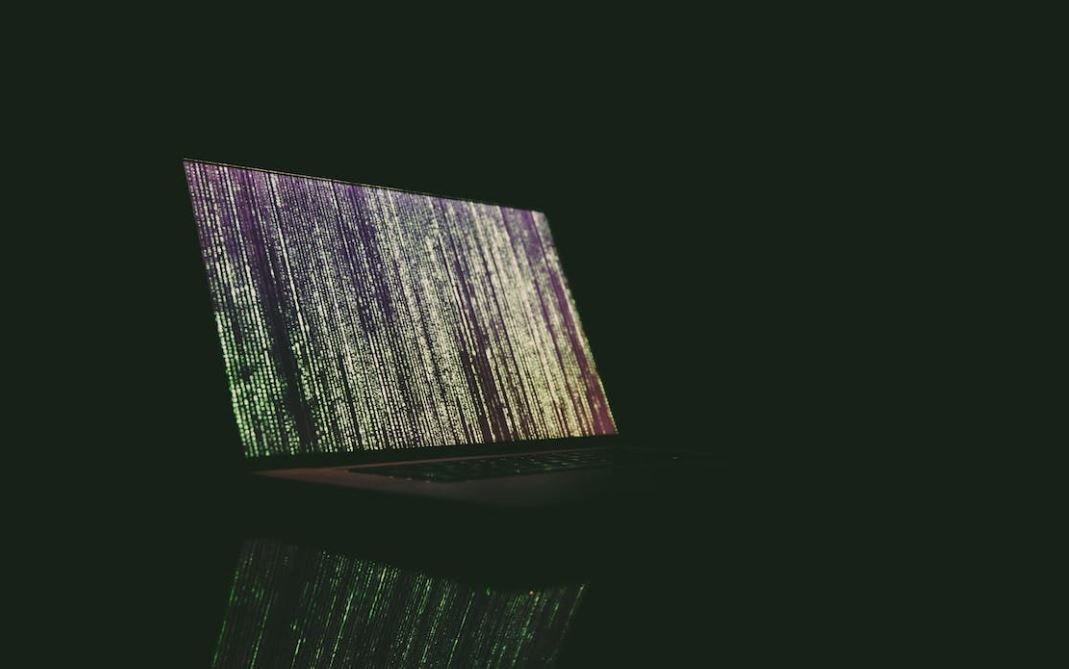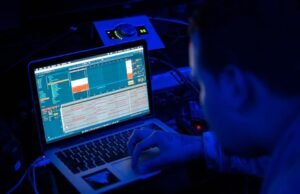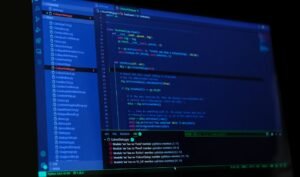GAN Video Generation
Video generation using Generative Adversarial Networks (GANs) has gained significant attention in recent years. GANs, a type of machine learning model, have the ability to generate new video content that is both realistic and diverse. In this article, we will explore the key concepts of GAN video generation and discuss its applications in various fields.
Key Takeaways
- GANs enable the generation of realistic and diverse video content.
- Video generation using GANs has applications in entertainment, advertising, and virtual reality.
- Training GANs for video generation requires a large dataset and computational resources.
- GAN videos can be enhanced by incorporating audio and text-based annotations.
The Power of GAN Video Generation
Generative Adversarial Networks have revolutionized the field of video generation. **By training two neural networks, a generator, and a discriminator, GANs can learn to generate high-quality videos that are indistinguishable from real footage**. This remarkable capability has opened doors to a wide range of applications across industries.
Versatility of GAN-Generated Videos
GAN-generated videos are finding applications in various domains such as entertainment, advertising, and virtual reality. **In entertainment, GANs have been used to create special effects in movies and generate virtual actors**. Advertisers are also leveraging GAN-generated videos to create compelling content that resonates with their target audience. Additionally, GANs play a significant role in the development of realistic virtual reality experiences.
Training GANs for Video Generation
Training GANs for video generation requires a large dataset of labeled videos and significant computational resources. **The generator network is trained to generate videos, while the discriminator network learns to differentiate between real and generated videos**. The two networks engage in a competitive process, improving their performance iteratively. This process continues until the generator can produce videos that fool the discriminator into thinking they are real.
| GAN Video Generation Benefits | Challenges |
|---|---|
| Realistic and diverse video content | Large dataset requirement |
| Applications in diverse fields | Intensive computational resources |
Enhancing GAN Videos
GAN-generated videos can be further enhanced by incorporating audio and text-based annotations. By synchronizing generated videos with appropriate sound effects or voice-overs, the overall experience can be significantly improved. Text-based annotations can also be added to provide additional context or information. **Enhancements such as these make the generated videos more engaging and interactive**.
| Enhancements | Benefits |
|---|---|
| Audio synchronization | Improved immersion |
| Text-based annotations | Enhanced information delivery |
Future Developments
The field of GAN video generation is still evolving, and researchers are continuously exploring new techniques and approaches. Exciting advancements are expected in terms of generating videos with higher resolutions, longer durations, and improved realism. **Moreover, GANs could potentially be used for video restoration, transforming old or low-quality videos into higher-quality counterparts**. As technology progresses, the possibilities for GAN-based video generation are limitless.
| Possible Future Advancements | Applications |
|---|---|
| Higher-resolution videos | Enhanced visual effects in movies |
| Longer video durations | Realistic virtual reality experiences |
The Power of GAN Video Generation
Generative Adversarial Networks have revolutionized the field of video generation, allowing the creation of realistic and diverse content. With applications in entertainment, advertising, and virtual reality, GAN-generated videos have become invaluable assets that captivate and engage audiences across industries. The continuous advancements in GAN technology open new frontiers for video generation, promising even more impressive results in the future.

Common Misconceptions
Misconception 1: GAN Video Generation is Instant and Perfect
One common misconception about GAN video generation is that it produces instant and perfect results. However, this is far from the truth. GANs, or Generative Adversarial Networks, require a significant amount of training time to learn and generate realistic video content. Furthermore, the generated videos may still have imperfections such as artifacts, blurriness, or distortions.
- GAN video generation is not an instantaneous process
- Generated videos may contain imperfections
- Training GANs for video generation is a time-consuming task
Misconception 2: GAN Video Generation Can Replicate Any Video
Another misconception is that GAN video generation can replicate any video with perfect accuracy. While GANs have shown remarkable progress in generating realistic images and videos, they are limited by the data they were trained on. GANs can only generate video content similar to what they learned during the training process and cannot create completely new and original videos.
- GANs can only generate videos similar to the ones they were trained on
- Replicating any video with perfect accuracy is not possible using GANs
- GANs have limitations in generating completely new and original videos
Misconception 3: GAN Video Generation Replaces Human Creativity
A common misconception is that GAN video generation replaces human creativity entirely. While GANs can autonomously create video content, they still require human guidance and input to generate meaningful and purposeful videos. GANs can assist artists and content creators by generating initial ideas or suggestions, but the creativity and storytelling aspect still heavily rely on human intervention.
- GAN video generation still requires human guidance and input
- Human creativity is essential in shaping the final video output
- GANs can assist artists, but they do not replace human creativity entirely
Misconception 4: GAN Video Generation is Only Used for Entertainment
Some people wrongly assume that GAN video generation is only used for entertainment purposes, such as creating deepfake videos or generating memes. While entertainment may be one application, there are numerous other practical uses for GAN video generation. For example, GANs can be employed in various industries like healthcare, education, and marketing to create simulations, training materials, or personalized content.
- GAN video generation has applications beyond entertainment
- Practical uses include simulations, training materials, and personalized content
- GANs are utilized in industries like healthcare, education, and marketing
Misconception 5: GAN Video Generation is Exclusively for Experts
Lastly, a common misconception is that GAN video generation is exclusively reserved for experts or researchers in the field of machine learning. While understanding the underlying concepts of GANs can be beneficial, there are already user-friendly tools and platforms available that allow individuals without extensive technical knowledge to experiment with video generation using GANs.
- GAN video generation is becoming more accessible to non-experts
- User-friendly tools and platforms are available for video generation using GANs
- Extensive technical knowledge is not necessarily required to experiment with GAN video generation

Introduction
Video generation has seen significant advancements in recent years, particularly with the use of Generative Adversarial Networks (GANs) – a class of machine learning models. GANs have the ability to generate high-quality, realistic videos based on training data. In this article, we explore various aspects and achievements of GAN video generation.
Comparison of GAN-Based Video Generation Techniques
The table below presents a comparison of different GAN-based video generation techniques based on their ability to generate high-resolution videos, handle diverse datasets, and reproduce complex dynamics.
| Technique | Resolution | Dataset Compatibility | Complex Dynamics |
|---|---|---|---|
| Progressive Growing of GANs (PGGAN) | Up to 1024×1024 | Works well with diverse datasets | Handles complex dynamics effectively |
| Video GANs with Trajectory Conditioning | Up to 256×256 | Compatible with trajectory-based datasets | Adequate for simple dynamics |
| Text-to-Video Synthesis Models | Variable | Dependent on text-based inputs | Limited for complex dynamics |
GAN Video Generation Improvements Over Time
The following table provides a chronological overview of notable improvements in GAN video generation techniques, showcasing advancements from 2016 to 2021.
| Year | Advancement |
|---|---|
| 2016 | Introduction of Video GANs |
| 2017 | Improved stability with Wasserstein GANs |
| 2018 | Progressive Growing of GANs for higher resolutions |
| 2019 | Conditional GANs for better control over video generation |
| 2020 | Text-to-Video Synthesis Models for textual input |
| 2021 | Improved stability and fidelity using StyleGAN2 |
Applications of GAN Video Generation
The applications of GAN video generation are vast and continue to expand. The table below highlights some notable domains where GAN-generated videos find practical use.
| Domain | Application |
|---|---|
| Entertainment | Creating realistic and immersive cinematics |
| Education | Enhancing virtual learning experiences with lifelike simulations |
| Healthcare | Training medical professionals through realistic surgical simulations |
| Artificial Intelligence | Improving training data for various AI applications |
| Gaming | Generating interactive and visually stunning game environments |
Evaluation Metrics for GAN Video Generation
Various evaluation metrics are employed to assess the quality and performance of GAN-based video generation models. This table presents a comparison of commonly used metrics.
| Metric | Description | Advantages |
|---|---|---|
| Inception Score (IS) | Measures visual quality and diversity | Easy to compute and interpret |
| Fréchet Inception Distance (FID) | Quantifies similarity between generated and real videos | Robust to noise and independent of dataset size |
| Structural Similarity (SSIM) | Compares structural information between generated and real videos | Reflects human perception of quality |
GAN Video Generation Datasets
Datasets play a crucial role in training GAN video generation models. The table below showcases some popular datasets used in GAN video generation research.
| Dataset | Description |
|---|---|
| UCF101 | A collection of 101 action classes |
| Kinetics | Large-scale dataset with diverse human actions |
| Moving MNIST | Handwritten digit sequences in motion |
| YouTube-8M | A large corpus of YouTube videos |
Challenges in GAN Video Generation
Although GAN video generation has witnessed remarkable progress, it is not without challenges. This table highlights some key challenges faced by researchers in the field.
| Challenge | Description |
|---|---|
| Consistency of generated frames | Maintaining coherence and smooth transitions |
| Real-time generation | Generating videos in real-time for interactive applications |
| Long-term video prediction | Predicting future frames accurately over longer durations |
| Large-scale training requirements | Requiring extensive computational resources and data |
Future Directions in GAN Video Generation
The table below presents potential future directions for GAN video generation research, aiming to tackle existing limitations and explore new possibilities.
| Direction | Description |
|---|---|
| Temporal consistency | Focusing on smooth transitions and coherent dynamics |
| Interactive video generation | Creating videos in real-time based on user input |
| Improved long-term predictions | Achieving accurate predictions for extended video sequences |
| Robust and efficient training methods | Developing techniques that reduce training time and resource requirements |
Conclusion
Generative Adversarial Networks (GANs) have paved the way for impressive advancements in video generation. From high-resolution outputs to compatibility with diverse datasets and complex dynamics, GANs offer remarkable possibilities. The continued progress in GAN video generation has far-reaching implications across entertainment, education, healthcare, AI, and gaming domains. Nonetheless, challenges remain, such as maintaining consistency, real-time generation, and long-term video predictions. To overcome these challenges, researchers are exploring future directions that focus on temporal consistency, interactive generation, improved long-term predictions, and more efficient training methods. With each advancement, GAN video generation moves towards achieving even greater realism and utility.
Frequently Asked Questions
What is GAN Video Generation?
GAN Video Generation refers to the process of using Generative Adversarial Networks (GANs) to generate realistic or synthetic videos. GANs are a type of machine learning model that can learn to generate new data similar to a given input dataset, including videos.
How does GAN Video Generation work?
GAN Video Generation involves two main components: a generator and a discriminator. The generator creates video frames based on random noise or an initial input, aiming to generate realistic videos. The discriminator evaluates the generated videos and provides feedback to the generator, helping it improve the quality of the generated videos over time through an adversarial training process.
What are the applications of GAN Video Generation?
GAN Video Generation has a wide range of applications, including video synthesis, video editing, video augmentation, and even deepfake creation. It can be used in the entertainment industry, virtual reality, gaming, and for research purposes in computer vision and machine learning.
What are the benefits of GAN Video Generation?
GAN Video Generation enables the creation of realistic and diverse video content without the need for extensive manual labor or large amounts of data. It can be a powerful tool for artists, filmmakers, and content creators to generate new video content quickly and efficiently.
What are the limitations of GAN Video Generation?
One limitation of GAN Video Generation is the potential generation of fake or misleading content that can be misused for unethical purposes. GANs may struggle to generate videos with complex scenes or that contain fine details. Additionally, GAN Video Generation requires significant computational resources and training time.
How accurate is GAN Video Generation?
The accuracy of GAN Video Generation depends on various factors, including the complexity of the video content, the quality of the training data, and the architecture of the GAN model used. State-of-the-art GAN models have shown impressive results in generating realistic and coherent videos, although there may still be room for improvement.
What are some popular GAN Video Generation models?
There are several popular GAN Video Generation models, including Deepfake, Recurrent GANs (RGANs), VideoGAN, and MoCoGAN. Each of these models has its own strengths and focuses, catering to different requirements and objectives in video generation.
Is GAN Video Generation a form of deep learning?
Yes, GAN Video Generation falls under the category of deep learning. GANs are a type of neural network architecture that involves multiple layers and complex computations to generate new data. As such, GAN Video Generation utilizes deep learning techniques to generate realistic videos.
Are there any ethical concerns with GAN Video Generation?
Yes, there are ethical concerns associated with GAN Video Generation. The ability to create realistic but fake videos raises concerns regarding deceptive practices, misinformation, and privacy issues. It is crucial to use GAN Video Generation responsibly and ethically, ensuring that it does not harm individuals or communities.




